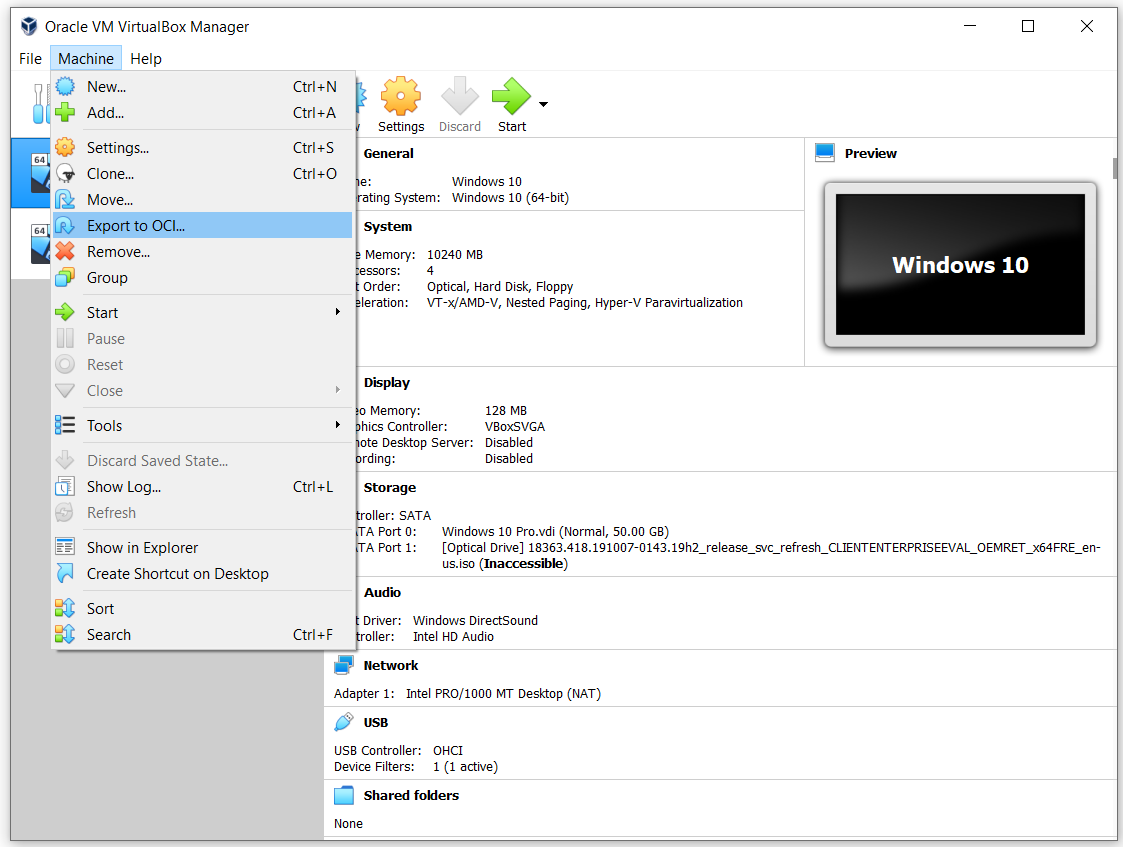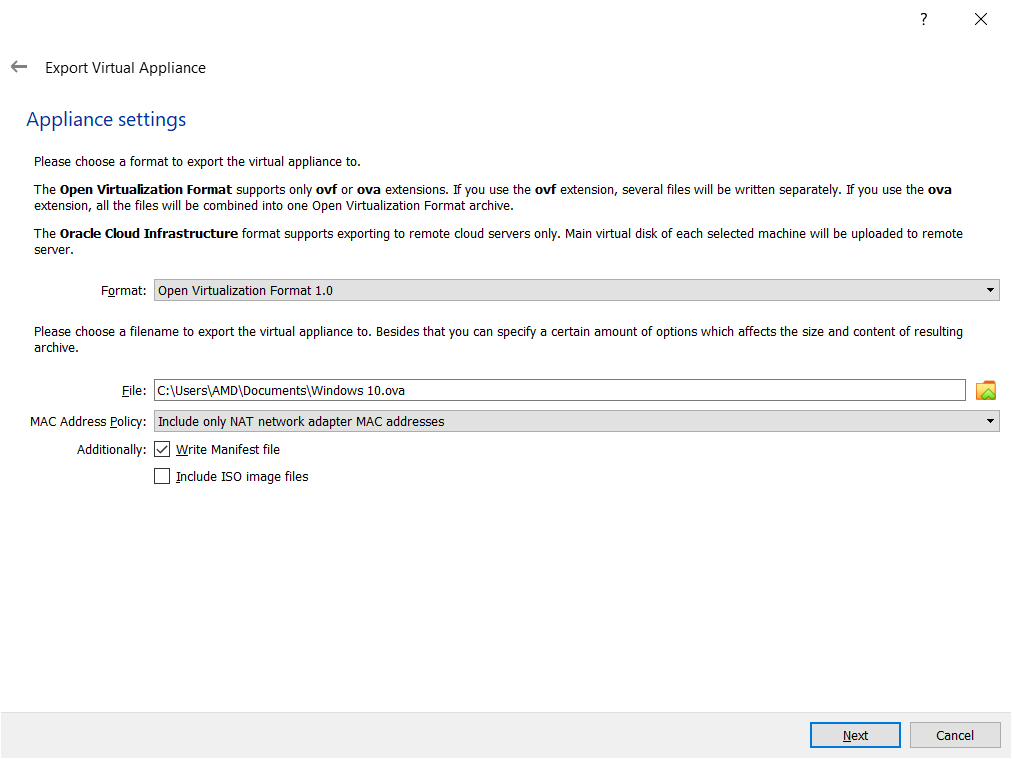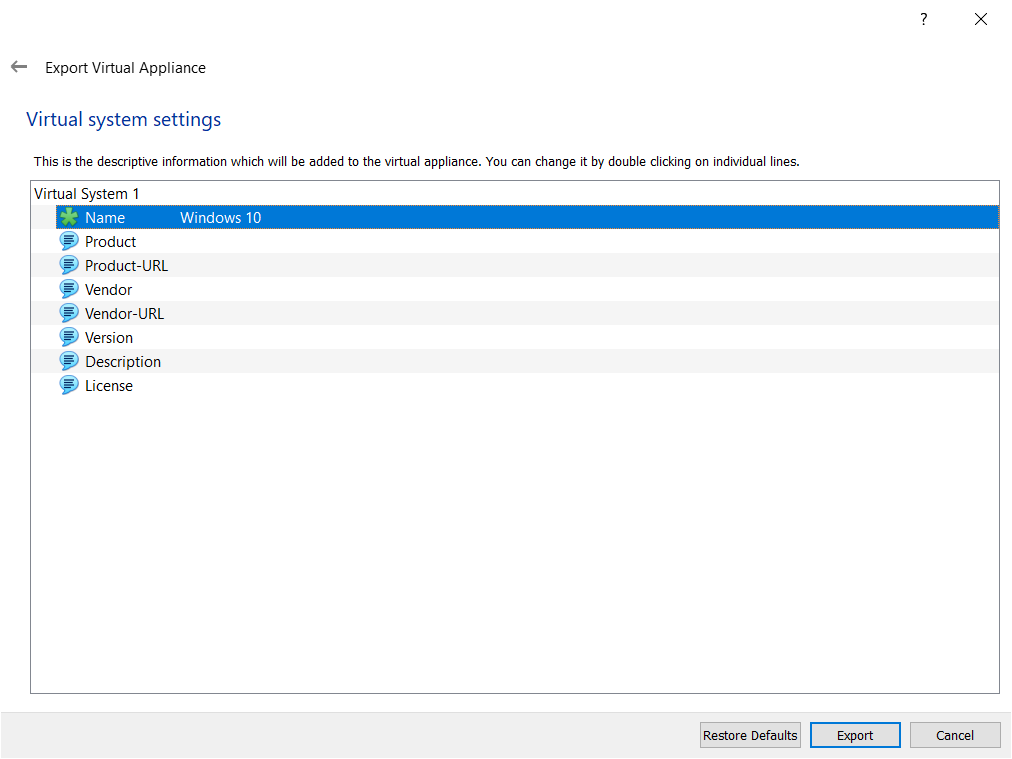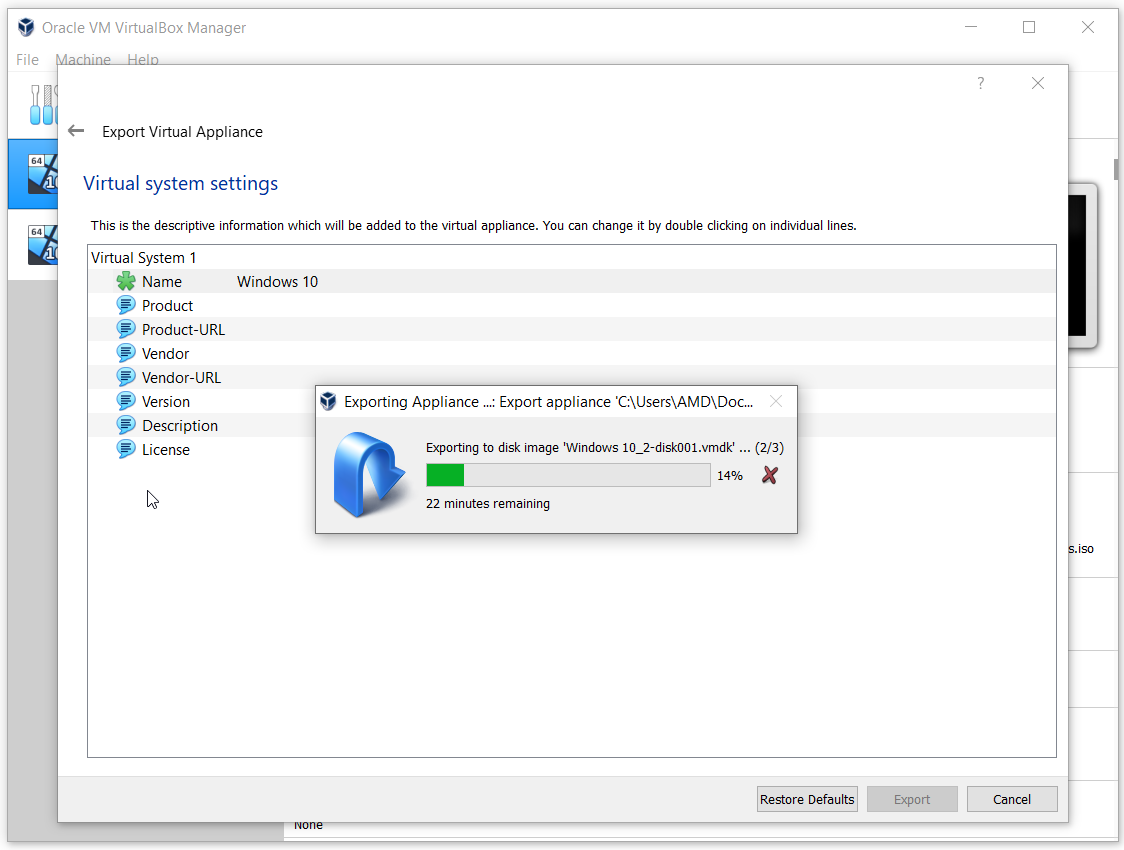As you can see there are three different OVF formats including 0.9, 1.0 and 2.0. The 0.9 is an older format with fewer support options, 1.0 is the default one and can be used in this scenario. The main difference between 1.0 and 2.0 is in functionalities. Version 2.0 is the latest one that brings an enhanced set of capabilities to the packaging of the virtual machine. Under File choose the location and filename for the exported virtual machine. By default, Oracle VM VirtualBox will save virtual machines in the Documents of the currently logged user accounts. Under MAC Address Policy specify how do you want to retain network card MAC address when exporting the virtual machine. There are three options available
Strip all network adapter MAC addresses – remove all assigned MAC addresses on network cards on the virtual machineInclude only NAT network adapter MAC addresses – keep the MAC address assigned to NAT network adapterInclude all network adapter MAC addresses – keep all MAC addresses assigned on network cards on the virtual machine
Write Manifest File – this file will automatically check the data integrity and prevent the deployment of damaged appliance. Include ISO Images File – include the ISO image file in the OVA file
Create your First Virtual Machine in Oracle VM VirtualBoxConfigure Virtual Machine in the Oracle VM VirtualBoxClone the virtual machine in the Oracle VM VirtualBoxExport and Import VMs on Oracle VM VirtualBox



